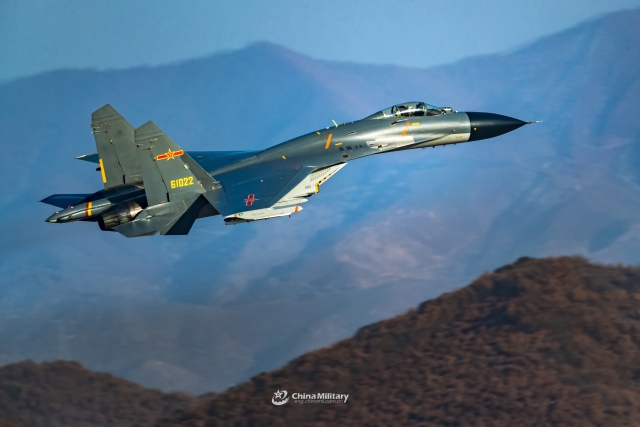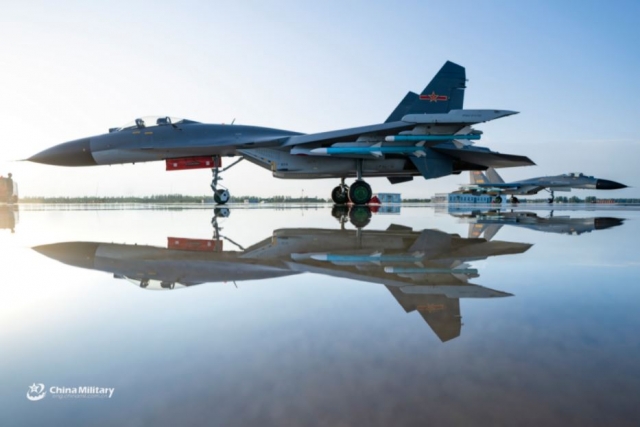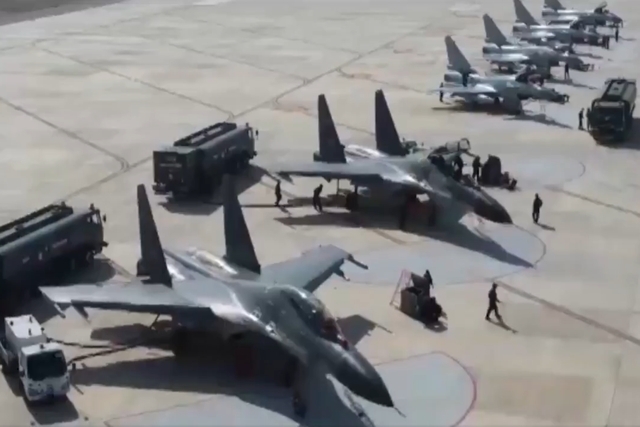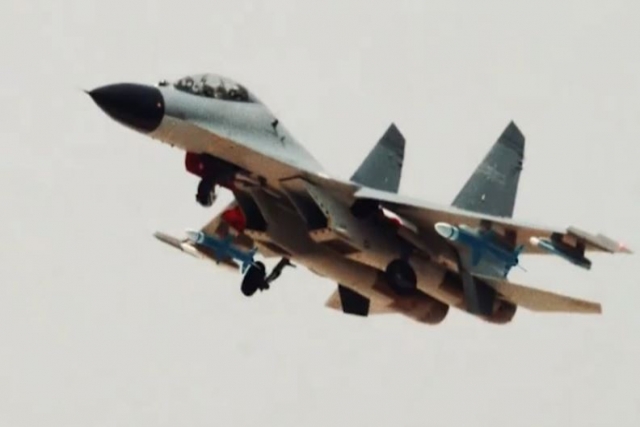Chinese Jets Fly 5,000Km in 20 Hours During Cross-Regional Drills

Chinese fighters including J-11B and J-11BS aircraft took part in a cross-day-and-night, cross-regional maneuver exercise during which they flew more than 5,000km in less than 20 hours.
The exercise covered different terrains including plateaus and the sea, demonstrating strong logistics support capabilities of all air bases involved. A distance of 5,000km means that, if flying in a straight line, a plane can travel across the entire country.
The J-11BS is the two-seat variant of the multirole J-11 fighter. These jets come armed with PL-12 and PL-15 air-to-air missiles.
“China is a large country with all kinds of terrains, and fast-flying warplanes may travel across all those places in a short time,” Fu Qianshao, a Chinese military aviation expert, was quoted as saying by the Global Times on Wednesday. “The exercise has demonstrated the outstanding skills of the pilots, who can operate from air bases in different terrains, altitudes, temperatures and weather conditions, which have a huge impact on how aircraft perform.”
Starting the drills, warplanes including the J-11B and the J-11BS attached to a brigade affiliated with the PLA Air Force took off from an air base in Central China and headed toward an unfamiliar region thousands of kilometers away, state-owned China Central Television (CCTV) reported on Tuesday.
During the maneuver, the aircraft formation penetrated mock hostile aerial defenses, flew from the plains to the sea, and arrived at the designated air base overcoming fatigue from the extended flight.
As night fell, the warplanes took off again and started another long-endurance flight and maneuver to another air base, the report said, noting that the whole cross-regional maneuver exercise lasted nearly 20 hours.
"We carried out this long-range flight not only throughout the day and night, but also took off and landed at many unfamiliar air bases. We flew across a variety of terrains with a total range of more than 5,000 kilometers, as the pilots had to deal with not only weather changes as they flew across different regions, but also unexpected mock combat challenges along the way," Guo Enyun, the commander of the brigade, said on CCTV.
The flight paths used in the drills were designed to be close to real combat, as different terrains were taken into consideration in defense penetration and air assault sessions, Gao Ruipeng, a staff officer at the brigade, said in the report.
The mock combat sessions were organized without the red and blue teams knowing each other's plans, and this exercised the pilots' air-to-ground combat and attack capabilities, Gao said.













